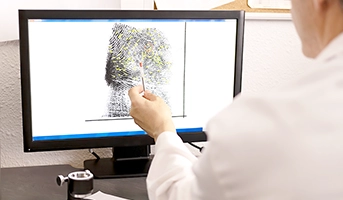Pediatrics is a branch of medicine concerned with the medical care of infants, children, and adolescents. It involves the prevention, early detection, and treatment of a variety of issues in children such as developmental disorders, behavioral disorders, dysfunctionality, and much more.
To know how to study Pediatrics in MBBS, understand the three pillars of pediatrics. By classifying the course content into three key pillars, Growth and Development, Nutrition & Anthropometry, and Immunization, you can easily navigate through the subject with maximum retention and minimal confusion.
Things to Remember:
- Classify causes: Organize causes for various conditions. This will help you to memorize an array of causes in a structured manner to recall at the time of the exam.
- Age is an important factor in Anthropometry: This is used clinically to diagnose malnutrition and monitor child growth in populations.
- Be thorough with Micronutrients and Electrolyte, because minor changes can have a major impact on the four systems.
- Diarrhea, bronchiolitis by the respiratory syncytial virus (RSV), nephrotic syndrome, and Hemolytic uremic syndrome (HUS) are some of the most important topics.
- Differential diagnosis: This requires you to critically think and put your clinical reasoning to test with the help of symptom-based and problem-based approaches.
- Know the Management- Investigation is a crucial part of management and treatment in Pediatrics.
- Newborn Examination: Focus on neonatal reflexes, postural reflexes, time of their appearing, time of disappearing.
- The Ballard score: Have clarity of the Ballard Score as it is based on the neonate’s physical and neuromuscular maturity and can be used up to 4 days after birth.
Don’t miss Practicals: Practical knowledge is extremely important for entrance exams. They help in conceptual clarity as you get exposed to real case-based scenarios. For better exposure, see as many patients as you can, of various age groups, such as newborns, infants, teenagers, and so on. Go through clinical case scenarios as much as possible. You can find a lot of them on DigiNerve’s Pediatrics for UnderGrads Course by Dr. Santosh Soans and Dr. Soundarya Mahalingam.
Take Notes: The most crucial thing is to take notes because they filter down the highlights of the vast 4th-year MBBS syllabus. According to research, actively engaging with a topic by listening and then summarising what you hear helps you grasp and recall later. While self-made notes are beneficial during the revision process, you can refer to previously generated notes if you have skipped making them during lectures. DigiNerve App offers the best Pediatrics MBBS notes.
Strengthen your memory: Refer to richly illustrated content that includes clinical, radiological images along with flowcharts, tables, and boxes. This will enhance your understanding and help you in recalling quickly at the time of exams.
Self-Study: After lectures, set aside time for self-study. Self-learning requires a lot of discipline and can be challenging at first, but it gets easier over time. Self-study is a very effective learning method, however, you can also indulge in discussions with your friends as brainstorming is an interesting way to learn.
Previous year’s question papers: Go through maximum previous year’s university exams, and entrance exams to know some of the most important topics that are frequently asked. Solve MCQs on a daily basis to get exposed to more and more cases.
To ace Pediatrics, enroll for DigiNerve’s Pediatrics for UnderGrads course by Dr. Santosh T Soans and Dr. Soundarya Mahalingam. It is one of the best online pediatric courses. This course is fantastic since it goes into history taking and clinical examination in great detail. The module on Gastroenterology, Respiratory and Cardiovascular Medicine, and so on, has also integrated systemic learning. On DigiNerve, you can find Pediatrics MBBS question bank to practise and assess your knowledge.
FAQs
-
How to Become a Pediatrician?
In order to become a pediatrician, one must have a bachelor’s as well as a master’s degree recognized by the Medical Council of India.
-
Is it hard to be a Pediatrician?
Children, as we all know, are difficult to deal with, and many individuals lack the patience and enthusiasm to do so, while others struggle to establish a rapport with them. Being a pediatrician is considered difficult, but it’s also quite rewarding. So, if you’ve set your mind on being a pediatrician, it shouldn’t be too difficult.
-
What do Pediatricians specialize in?
Pediatricians are doctors who specialize in the treatment of children. They are responsible for maintaining physical, mental, and emotional well-being at every stage of a child’s development, as well as providing health care for severely or chronically unwell children.
-
What are the advantages of being a Pediatrician?
Most people pursue this job because they want to help children get better, and it’s usually a highly rewarding experience. They are also responsible for impacting youth and instilling healthy behaviour in children, such as exercising and eating well.
With more time spent online, many students are trying to be productive by enrolling in online pediatric courses. This not only helps gain more knowledge to further your career and studies but also provides an extra edge over other students. However, the dilemma is finding good pediatric courses that teach in an engaging, informative, and fun manner. To begin your search for the best pediatrician course, let us look at the various factors that make some online pediatric courses better than others:
- Method of Teaching – While most pediatrician courses consist of several online lectures, there are a few distinctions that you need to look for. For example, Pediatrics for UnderGrads by DigiNerve focuses on a blend of over 74 hours of video lectures by India’s top faculty. The Pediatrics course includes graphs, images, and other types of videos within these lectures. This can help boost focus and results in a more engaging learning environment.
- Method of Assessment – Some online pediatric courses aren’t that concerned about testing your knowledge and are more focused on simply feeding you information. However, the best pediatrician course is one that is equally concerned with your assessment to gauge whether or not you have learned enough and to identify which areas in your study are weak and need more attention. The best way to self-assess is through a pediatrics MBBS question bank, and Pediatrics for UnderGrads has a bank of over 1200 MCQs at the end of each lecture to ensure that you are stimulated and constantly being assessed.
- Supplementary Material – While lectures and Pediatrics MBBS question banks are important, there is another key factor- supplementary material provided to the students along with their Pediatrics clinical book. These include specific pediatrics study notes given along with lectures. Material like this will help information stick and makes the process of memorization much easier. To help students learn as much as possible, Pediatrics for UnderGrads provides 73 concise pediatrics study notes that can be easily and quickly scrolled to retain key information and get a last-minute boost.
- Faculty – Ultimately, an online pediatrics course will only be best if it’s developed and delivered by the top faculty. Luckily, Pediatrics for UnderGrads is taught by Dr. Santosh T Soans and Dr. Soundarya Mahalingam, each of whom is an expert in their field. Dr. Santosh has over 35 years of experience in Pediatrics, is a visiting consultant in some of the best hospitals in India, published a book, and has been awarded an honorary degree. Dr. Mahalingam has published over 26 articles related to Pediatrics and is affiliated with the Kasturba Medical College. To learn from such qualified faculty, all you need to do is enroll in Pediatrics for UnderGrads on DigiNerve.
Now that you know the factors to look for when trying to find the best pediatric courses, click here to go to DigiNerve’s Pediatrics for UnderGraduates.






























